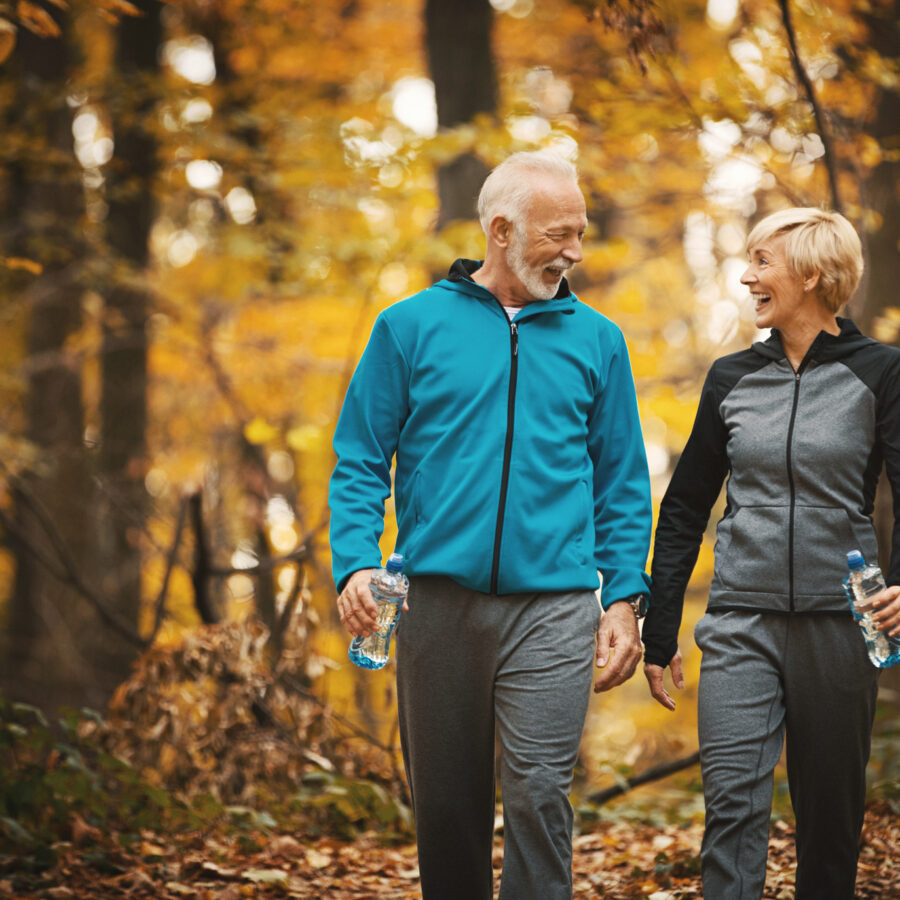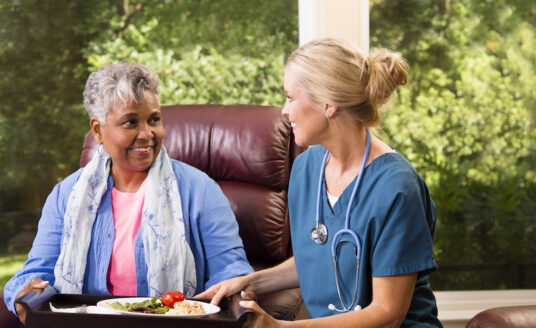As the available hours of sunshine decrease and temperatures drop, people of all ages, but especially older adults, experience feelings of depression and sluggishness. Appetite cravings might change to dense foods high in carbohydrates and calories, and physical activity tends to decline. All of this can lead to lower energy levels and an unhealthy lifestyle.
Many of these symptoms are common in seasonal affective disorder, a type of depression often experienced by seniors related to the changing seasons.
Let’s take a look at some healthy living tips for older adults that will help them break out of this cycle and achieve their autumn wellness goals.
10 Healthy Living Tips for Autumn Wellness
1. EXERCISE
It might be challenging, but it is important to keep your body in motion during fall and winter months. You don’t need to take up hiking or running — completing household chores and low-impact indoor workouts are great autumn activities to keep your body moving.
Nurse Next Door provides information on safe and easy indoor exercises for older adults to improve strength, balance, and flexibility.
Walking is great cardiovascular exercise. If the weather does not permit walking outside, there are alternative indoor cardio routines for seniors to try.
Consult with your physician before beginning any exercise program.
2. EAT SEASONALLY
While some fresh produce will disappear from the grocery store as the weather cools, there are still plenty of nutrient-rich fruits and vegetables from which you can choose.
The Upside lists some fall-favorite produce and ways to prepare and eat them. Some of the foods include:
- Winter squash
- Beets
- Figs
- Apples
- Leeks
- Carrots
- Dark leafy greens
Sweet potatoes contain fiber and vitamins A, C, B6, and manganese. Cruciferous vegetables like brussels sprouts and cabbage are also rich in vitamins and minerals.
Be mindful of the tendency to take in too many additional calories through snacking during the fall. Delish offers several healthy fall soup recipes.
And this goes for hydration, too. Seniors need to stay hydrated even as the weather cools, even though they may feel less thirsty. Every cell in the human body needs water to work properly. Herbal tea on cold days counts toward fluid intake, as does vegetable or fruit juices.
3. SPICE THINGS UP
If a senior is craving more flavor in his or her fall food selection, spices can be good for a person’s health as well as their taste buds, according to Johns Hopkins Medicine.
Here are some of the benefits:
- Cinnamon lowers blood sugar and may provide heart-healthy benefits by reducing cholesterol and triglyceride levels.
- Turmeric has been linked to reducing inflammation, pain and swelling in people with arthritis.
- Studies have shown that garlic may keep blood vessels flexible and reduce cholesterol and triglycerides.
- Cayenne eases pain and restricts the growth of ulcer-causing bacteria.
4. GET ENOUGH VITAMIN D
Vitamin D helps maintain strong bones and muscles, and is absorbed in the body from sunlight. As fall approaches and the amount of sunlight decreases, other sources of vitamin D may need to be found. Foods higher in vitamin D include:
- White mushrooms
- Salmon, herring, sardines, tuna
- Milk or orange juice fortified with Vitamin D
- Fortified cereals
5. REDUCE THE RISK OF FALLS
According to the National Institute on Aging, thousands of seniors injure themselves in falls each year. When an elderly person is injured in a fall, it could cause a cascade of serious consequences that can lead to disability and even death.
Fall and winter, with their rain-slicked or icy sidewalks, steps, and driveways, are seasons prime for increased fall risks. Problems with balance, reflexes, coordination or vision make falls more likely, as do certain medications.
There are some things that can be done by seniors and their family members that will reduce fall risks:
- Determine if there have been any recent downturns in the senior’s health.
- Find out when the senior had his or her last eye exam.
- Notice if the senior is holding onto walls, furniture, or another person while they are walking.
- Consult with a physician to find out if the senior’s medications could be affecting balance.
- Check the home for tripping hazards—exposed electrical cords on the floor, uneven floors, upturned corners on throw rugs, etc.
- Look into the possibility of canes, walkers, or other assistive devices.
- Assess if stairs or poor lighting could be a problem.
6. DON’T TAKE UNNECESSARY RISKS
Seniors need to prepare early for cold weather to minimize their exposure to the cold and potentially hazardous conditions.
Their home should be well-stocked with supplies, including food and medications. This should include non-perishables like water, candles, fresh batteries and extra blankets.
Furnaces should be inspected, and smoke and carbon monoxide detectors evaluated.
One of your yearly autumn wellness activities should be to set schedules for or arrange fall leaf raking and winter snow removal, which are especially important for seniors with chronic conditions who should not be performing these tasks.
7. KEEP WARM
It’s recommended that seniors set their home thermostats to a minimum of 68 to 70 degrees to maintain autumn wellness.
When seniors go outside for autumn activities or later on in cold weather, they should dress in loose layers of clothing that trap warm air between the layers. Wearing a waterproof coat or jacket if it is raining or snowing is beneficial, too.
Illnesses like diabetes can inhibit blood flow that would normally provide warmth, and thyroid conditions can also make it hard to maintain normal body temperature. Also, some prescriptions or over-the-counter medications can affect body heat. Talk to a physician about all the medications and supplements being taken.
You should also take precautions and stay inside on windy days which can quickly lower body temperature.
8. MINIMIZE EXPOSURE TO COVID-19, FLU, AND OTHER SEASONAL AILMENTS
Has the senior had his or her flu vaccine? Flu and COVID-19 prevention is much the same, which means limiting contact with others and frequent handwashing.
9. CONTINUE TO MANAGE CHRONIC CONDITIONS
Seniors should not neglect chronic conditions like heart disease, diabetes, chronic obstructive pulmonary disease, high blood pressure and dementia during the fall and winter months. Pneumonia is especially harmful during colder weather for seniors with chronic conditions.
Older adults need to monitor their health, take their medications correctly, and stay in contact with their physician.
10. STAY POSITIVE
Physical health is tied to emotional and mental health. Staying engaged with hobbies and interests, and prioritizing connections with family and friends when planning autumn activities, are great healthy-living tips that encourage and energize seniors to maintain their physical health.
Also, studies have linked positive thinking to better protection from the inflammatory effects of stress and the energy needed to maintain a healthier lifestyle.
Older adults should be encouraged to focus on the good things in their lives, stay connected with people they love, and turn off their televisions from time to time to listen to music, read a book, or call to chat with a friend or family member.
Find new ways to meet your autumn wellness goals on Bethesda’s health & wellness blog.



